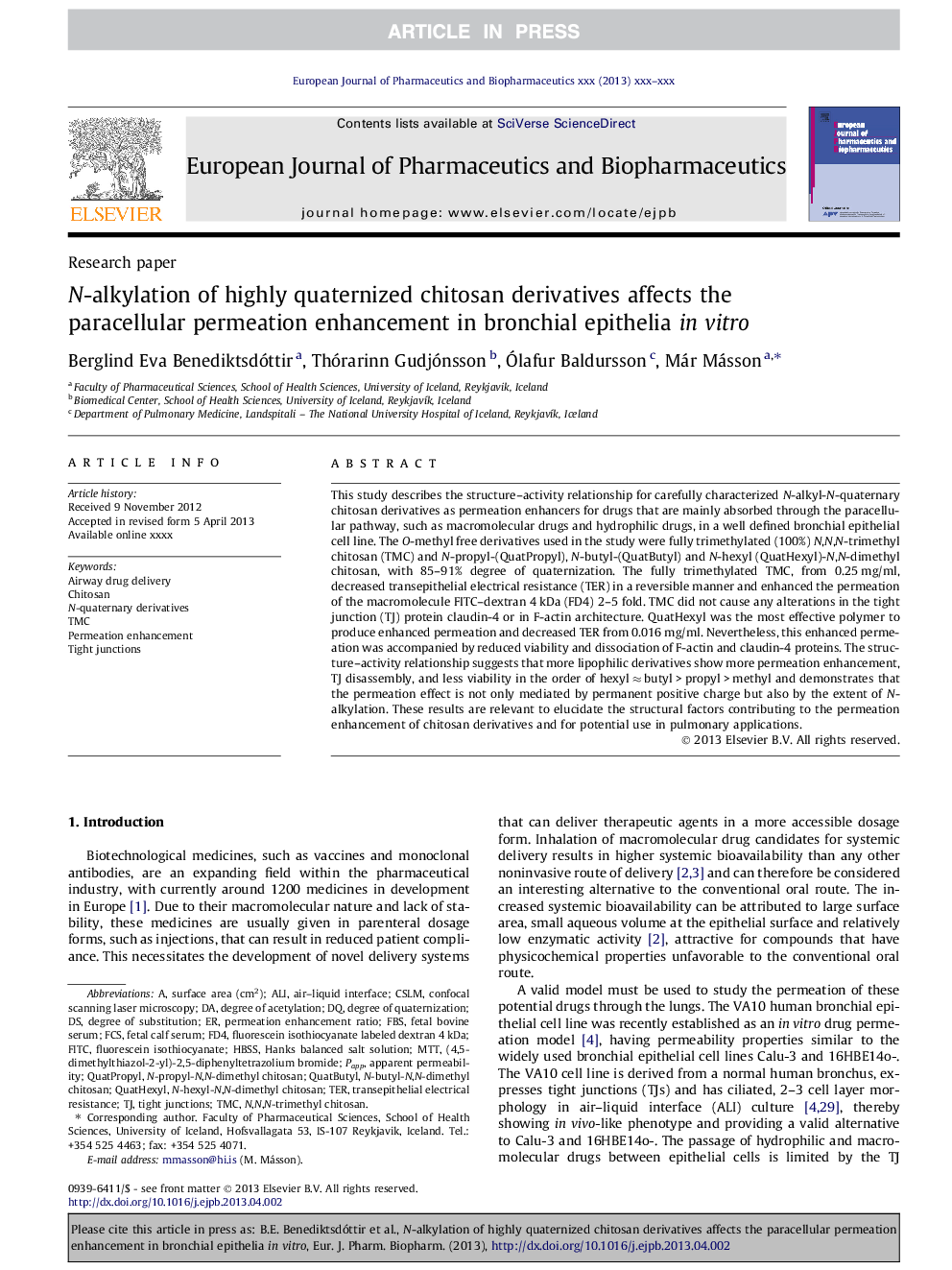| Article ID | Journal | Published Year | Pages | File Type |
|---|---|---|---|---|
| 8414250 | European Journal of Pharmaceutics and Biopharmaceutics | 2014 | 9 Pages |
Abstract
This study describes the structure-activity relationship for carefully characterized N-alkyl-N-quaternary chitosan derivatives as permeation enhancers for drugs that are mainly absorbed through the paracellular pathway, such as macromolecular drugs and hydrophilic drugs, in a well defined bronchial epithelial cell line. The O-methyl free derivatives used in the study were fully trimethylated (100%) N,N,N-trimethyl chitosan (TMC) and N-propyl-(QuatPropyl), N-butyl-(QuatButyl) and N-hexyl (QuatHexyl)-N,N-dimethyl chitosan, with 85-91% degree of quaternization. The fully trimethylated TMC, from 0.25 mg/ml, decreased transepithelial electrical resistance (TER) in a reversible manner and enhanced the permeation of the macromolecule FITC-dextran 4 kDa (FD4) 2-5 fold. TMC did not cause any alterations in the tight junction (TJ) protein claudin-4 or in F-actin architecture. QuatHexyl was the most effective polymer to produce enhanced permeation and decreased TER from 0.016 mg/ml. Nevertheless, this enhanced permeation was accompanied by reduced viability and dissociation of F-actin and claudin-4 proteins. The structure-activity relationship suggests that more lipophilic derivatives show more permeation enhancement, TJ disassembly, and less viability in the order of hexyl â butyl > propyl > methyl and demonstrates that the permeation effect is not only mediated by permanent positive charge but also by the extent of N-alkylation. These results are relevant to elucidate the structural factors contributing to the permeation enhancement of chitosan derivatives and for potential use in pulmonary applications.
Keywords
Degree of quaternizationFD4FBSTMCFITCFCSHBSSCSLMHanks balanced salt solutionMTTN,N,N-Trimethyl chitosantight junctionsPermeation enhancementAliTERdegree of acetylationDegree of substitutionair–liquid interfacefetal bovine serumfetal calf serumfluorescein isothiocyanatetransepithelial electrical resistanceConfocal scanning laser microscopyApparent permeabilityPappChitosan
Related Topics
Life Sciences
Biochemistry, Genetics and Molecular Biology
Biotechnology
Authors
Berglind Eva Benediktsdóttir, Thórarinn Gudjónsson, Ãlafur Baldursson, Már Másson,
